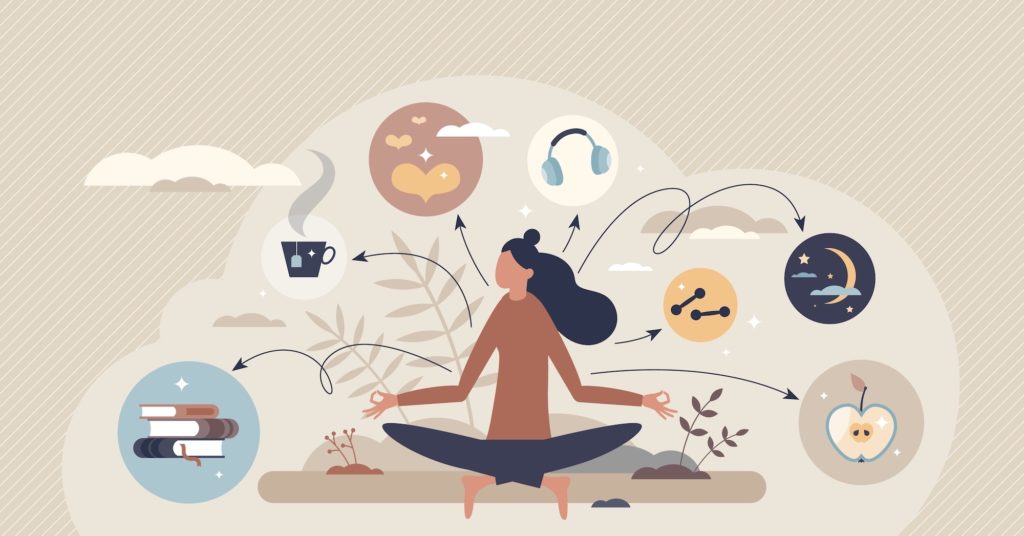
9.6 Minutes to Better Life and Leadership
This article was originally published on Entrepreneur.com
Micro-habits are the antidote to a chaotic world, offering a pathway to sustainable change.
We live in a time of hyper-connectivity, complexity and fragmented attention.
For entertainment, humans used to watch stage performances that lasted several hours. Then came modern audiovisual films that run for 90 minutes. A decade ago, we welcomed YouTube, where the average video lasts 11.7 minutes. Even this proved too long for distracted minds, and social media found a sweet spot in 15-second TikTok clips, curated — on autoplay — by an algorithm that knows us better than we know ourselves.
We see this tendency in education. Degrees used to take three or more years. Then came diplomas and certificates. Now people engage in micro-learning and proudly share their nano-badge or micro-credential, earned in a few weeks, days or hours.
Books became blinks, letters turned into tweets and hostility downsized into micro-aggressions. How can future leaders navigate a world of habituated busyness and micronized attention? Sustained focus is difficult. Left untethered, our minds seek out novelty and relief. Quick video clips, for example, require minimal commitment with the promise of a dopamine hit.
Is order crumbling into chaos? Can we ever again enjoy slow travel, deep work or a lengthy novel?
Perhaps what we’re seeing is entropy in action. Order and energy dissipate into cosmic dust, quite unfortunately in the form of 15-second clips of teenagers dancing.
Building a stable state
In fragmentation lies the potential for creation — an opportunity to reassemble the parts into a more coherent whole. Aristotle advocated for holism, as opposed to reductionism, suggesting that an organism is greater than the sum of its parts. Remove any component, and the system becomes unstable, even sick. A complex system strives to create vitality in its internal environment while attaining balance with the external. This phenomenon is called homeostasis — or the establishment of a stable state.
How can we deliberately reassemble the building blocks of our lives into a formation that is coherent, stable, resilient to external stressors, and maybe even anti-fragile, relishing life’s intrinsic volatility?
Micro-habits and macro-change
In his bestselling book, Atomic Habits, author James Clear explains how implementing small positive habits leads to dramatic results and sustained change. Professor BJ Fogg of Stanford concurs in his book Tiny Habits.
The premise of both approaches is to identify who you want to become and then deconstruct that identity into micro-habits that can be incrementally scaled up as you gain momentum. Remember, change creates an imbalance. Whether you want to transform yourself or your organization, you’ll encounter resistance. This is because change disturbs the stable state, even when it ultimately leads to a positive outcome.
Ever wonder why most new year’s resolutions and diets fail, so many gym memberships remain unused and change management initiatives take years? Simply, it’s because of our tendency to avoid discomfort and maintain stability.
The power of starting small
By activating micro-habits, you covertly bypass resistance to change. Instead of going for a half-hour jog when you want to get fit, start by simply putting on your running shoes. Once this habit is as reliable as brushing your teeth, you progress to level two, which might be walking to your front door. Prepare your environment by leaving cues and triggers. Attach new micro-habits to habits that are already robust and reliable.
A participant in one of my workshops decided to implement a micro-habit by doing five push-ups every time he brewed his morning coffee. A year later, he had completed over 1,600 pushups he would never have attempted otherwise. In year two, he doubled the effort and achieved almost 4,000 pushups. The momentum spilled over into other areas of his life. He was a person transformed by a practice that required less than a minute each day.

How do I get started?
James Clear says that if you become 1% better each day, then by the end of a year, you will be 37 times improved. For granularity, I calculated that 1% of 16 waking hours per day is 9.6 minutes.
Can you allocate 9.6 minutes to your growth today and every day of your life? If not, something needs to change. If yes, what will you do?
Here are some ideas to fill 9.6 minutes:
- 2-minute stretch after waking up
- 2-minute breathing exercise to establish a baseline of calm
- 1 minute identifying three things that have gone well (gratitude practice)
- 2-minute high intensity work out, such as skipping
- 2.6 minutes for a deliberate micro-break mid-afternoon (go outside if possible)
Alternatively, you could watch 36 TikTok videos. You are the sum of your habits. What will you choose?
Rebuild your life and leadership
You have the opportunity to rebuild your life from the ground up. When micro-habits become engrained, you can increase the scale of those you find most impactful. Ultimately you become a calm, grateful, fit, well, focused or positive person.
Implement these rhythms with your team. Encourage micro-breaks, mindful moments, power poses, shorter meetings and sharing of quick wins. Identify who you are as a collective — your purpose and values — then activate the micro-habits that will lead to that identity.
Within a web of positive habits, you will find space, energy and freedom. Instead of chaos and fragmentation, you’ll create regenerative systems that are greater than the sum of their parts.

